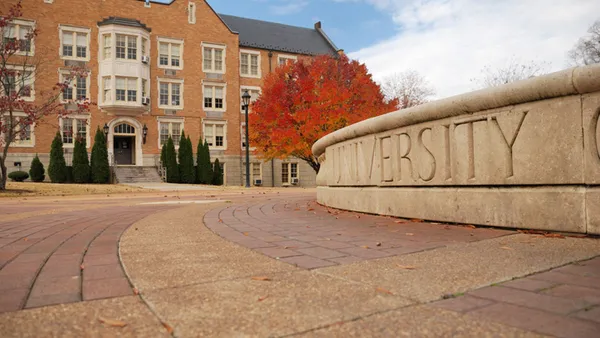Dive Brief:
- Donations to education make up a significant portion of donor-advised fund giving and are on the rise, according to research that found education received 29% of donor-advised fund giving from 2014 to 2018, more than any other category tracked.
- A specific slice of the education sector, historically Black colleges and universities, appears to have experienced enormous increases from donor-advised funds in recent years. Grant dollars given to HBCUs and racial justice organizations grew by 341% from 2019 to 2020. They went from receiving 1.5% of total grant dollars given through donor-advised funds to 4.9%.
- Religious organizations and public-society benefit organizations — which include United Ways, community financial development institutions and legal aid organizations — received the second- and third-largest shares of donor-advised fund grant dollars, according to the research, which is from the Giving USA Foundation and the Lilly Family School of Philanthropy at Indiana University-Purdue University Indianapolis. Religious organizations got 14% of donor-advised fund grant dollars, and public-society benefit organizations received 13%.
Dive Insight:
Donor-advised funds are considered among the fastest-growing charitable giving vehicles, according to research from the Giving USA Foundation. As a result, they're an important consideration for higher ed fundraisers.
These funds allow people to donate assets and receive an immediate tax deduction, but they do not have to immediately route the money to organizations that will use it. The funds invest donated assets and act as their administrators. The original donor can then recommend charities to receive grants from the fund over time.
The research from Giving USA and the Lilly School, which was released in November, counts education as including K-12 schools, higher education institutions, libraries and graduate and professional schools.
Education got 14% of giving from all sources — not just donor-advised funds — surveyed by Giving USA between 2014 and 2018. The education sector received almost 30% of all donor-advised fund dollars during that same time period. That suggests donor-advised funds are a potentially lucrative avenue for colleges seeking to raise charitable dollars.
"University officials need to be communicating that their need still exists," said Anna Pruitt, co-author of the report and managing editor of Giving USA. "They need to tell donors how they are stewarding those gifts and what they need to continue creating environments where students can succeed."
Donor-advised fund giving rose over the last decade during a time of financial and social tumult, Pruitt said. Overall grants from donor-advised funds increased by about $13.7 billion from 2014 to 2018, rising to $28.5 billion. Certain sectors saw a big jump in direct response to the pandemic, the recession and the movement for racial justice, Pruitt said.
"There are donors behind donor-advised funds, and they’re not giving in a vacuum," said Pruitt. "They appear to be responding to large-scale movements and economic impacts."
Human services that addressed immediate needs, like homeless shelters and food banks, were particularly popular in donor-advised fund giving, Pruitt said. However, one category's gain did not inherently mean other categories lost out since contributions from donor-advised funds increased overall.
"It's not as though we say other categories stop receiving money because of those increases. Education giving still went up in 2020," she said.
The study used grant data from 87 organizations sponsoring donor-advised funds between 2014 and 2018. This group of funds collectively accounted for nearly three-quarters of all donor-advised fund grant dollars. The report included preliminary data from a subset of institutions from 2019 and 2020.














